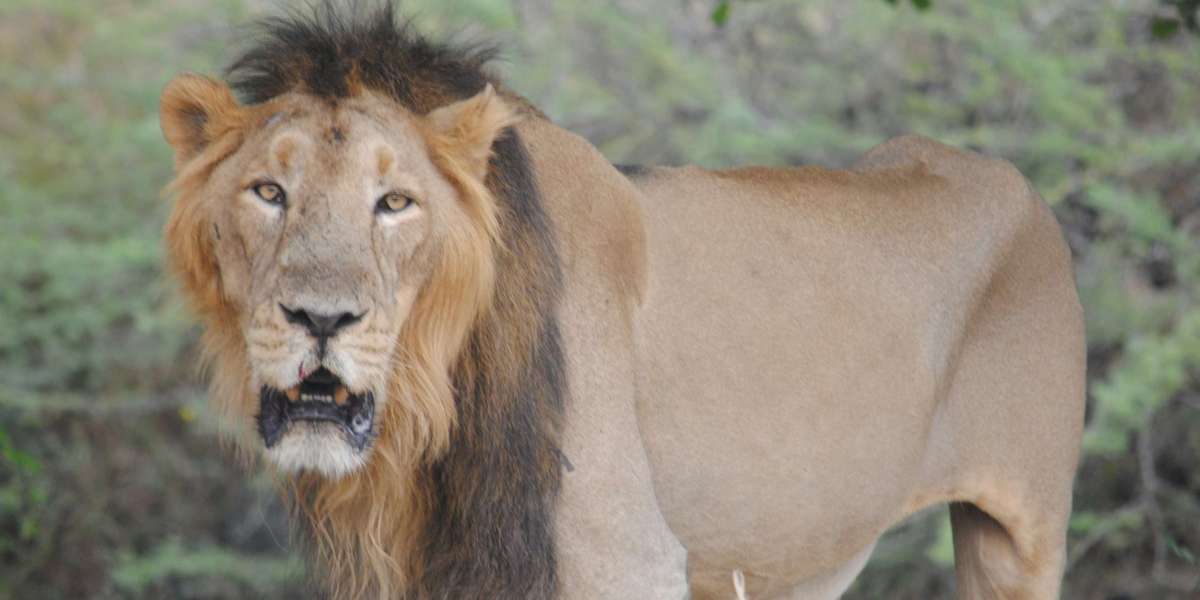Beyond its palaces and desert festivals, Rajasthan hides a wild soul—one that roars, soars, and thrives across forests, wetlands, and dunes. Rajasthan Wildlife Tourism offers a thrilling escape into nature, where tigers patrol ancient ruins, leopards lounge on granite hills, and migratory birds dance across shimmering lakes.
From the iconic Ranthambore to the lesser-known Tal Chhapar, Rajasthan’s wildlife circuit is a blend of biodiversity, heritage, and adventure. Whether you're a seasoned photographer, a curious traveler, or a family seeking something beyond forts and fairs, the wild side of Rajasthan is ready to surprise you.
? Why Rajasthan Wildlife Tourism Is Unique
? Flagship Species: Bengal tigers, Indian leopards, sloth bears, hyenas, and the endangered Great Indian Bustard
? Birding Paradise: Over 500 species including cranes, pelicans, harriers, and storks
?️ Diverse Habitats: Dry deciduous forests, wetlands, grasslands, and desert ecosystems
?️ Heritage Meets Nature: Many sanctuaries are nestled around forts, temples, and tribal villages
? Accessible Safaris: Well-connected by road and rail, with guided jeep safaris and eco-lodges
?️ Top Destinations for Rajasthan Wildlife Tourism
Here’s a curated list of the most popular and ecologically rich parks and sanctuaries:
1. Ranthambore National Park (Sawai Madhopur)
Famous for tiger sightings amid ancient ruins
Offers jeep safaris, birdwatching, and photography tours
Best time: October to April
2. Sariska Tiger Reserve (Alwar)
Known for tigers, leopards, nilgai, and historical temples
Close to Delhi and Jaipur, ideal for weekend getaways
Best time: October to March
3. Keoladeo Ghana Bird Sanctuary (Bharatpur)
UNESCO World Heritage Site
Ideal for birdwatchers—home to Siberian cranes, painted storks, and pelicans
Best time: November to February
4. Desert National Park (Jaisalmer)
Showcases the Thar desert’s unique ecosystem
Spot blackbucks, desert foxes, and the Great Indian Bustard
Best time: October to March
5. Jawai Leopard Reserve (Pali)
High leopard density in dramatic granite terrain
Luxury tented stays and guided safaris
Best time: October to April
6. Tal Chhapar Sanctuary (Churu)
Grassland habitat ideal for blackbucks and raptors
Known for harriers, falcons, and eagles
Best time: September to March
7. Mount Abu Wildlife Sanctuary
Located in the Aravalli hills
Home to sloth bears, sambars, and rich birdlife
Best time: October to March
8. Kumbhalgarh Wildlife Sanctuary
Surrounds the historic Kumbhalgarh Fort
Spot wolves, hyenas, jungle cats, and antelopes
Best time: October to March
Sources: Rajasthan Tourism Official Site, Tour My India, Rajasthan Tourism Network
? Suggested Wildlife Circuits
? 5-Day Ranthambore–Bharatpur Circuit
Day 1–2: Ranthambore safaris
Day 3: Transfer to Bharatpur
Day 4–5: Birdwatching and rickshaw tours
? 7-Day Leopard & Desert Trail
Day 1–2: Jawai leopard safaris
Day 3–4: Transfer to Jaisalmer
Day 5–6: Desert National Park exploration
Day 7: Return via Udaipur
? 10-Day Rajasthan Wildlife & Heritage Combo
Ranthambore → Jaipur → Sariska → Bharatpur → Agra
Combines wildlife with forts, palaces, and cultural immersion
? Where to Stay
Rajasthan offers a range of wildlife-friendly accommodations:
Category | Examples | Ideal For |
Budget Lodges | RTDC Forest Rest Houses, Jungle View | Backpackers, solo travelers |
Mid-range Resorts | Ranthambore Regency, Sariska Safari Lodge | Families, small groups |
Luxury Camps | Sujan Jawai, Oberoi Vanyavilas | NRIs, wildlife photographers |
? Best Time for Rajasthan Wildlife Tourism
Season | Wildlife Activity | Safari Comfort | Birdwatching | Photography |
Oct–Mar | High | Very Comfortable | Excellent | Great Lighting |
Apr–Jun | Moderate | Hot & Dry | Low | Dramatic Scenes |
Jul–Sep | Low (monsoon) | Restricted access | Moderate | Lush landscapes |
?♀️ Add-On Experiences
Wildlife Tourism in Rajasthan isn’t just about safaris. Here are some immersive add-ons:
Tribal Village Visits: Meet the Rabari and Bhil communities
Nature Walks: Guided treks in buffer zones
Cultural Evenings: Folk music, dance, and storytelling
Photography Workshops: Led by experts during peak seasons
Conservation Talks: Learn about local efforts to protect endangered species
? How to Reach Major Wildlife Parks
By Air: Jaipur, Udaipur, Jodhpur, and Jaisalmer are key airports
By Train: Sawai Madhopur (Ranthambore), Bharatpur, Alwar, and Pali are well-connected
By Road: Rajasthan has excellent highways linking all major parks
? Travel Tips
Book safaris and accommodations at least 30–60 days in advance
Carry binoculars, sunscreen, and a refillable water bottle
Wear earth-toned clothing and avoid strong perfumes
Follow forest rules—no loud noises, littering, or flash photography
Respect wildlife—observe from a distance and never feed animals
?️ Souvenirs & Local Crafts
Handmade Textiles: Block prints, tie-dye, and camel wool shawls
Wildlife Art: Miniature paintings and eco-themed decor
Organic Products: Honey, herbal teas, and forest-sourced oils
Tribal Jewelry: Crafted by local artisans near sanctuaries
? Final Thoughts
Rajasthan Wildlife Tourism is a journey into the untamed soul of India—where nature and culture intertwine, and every safari tells a story. Whether you're chasing the roar of a tiger, the glide of a crane, or the silence of a desert dusk, Rajasthan’s wild landscapes promise awe, adventure, and authenticity.
So pack your camera, your curiosity, and your sense of wonder—and let Rajasthan’s wilderness welcome you.













